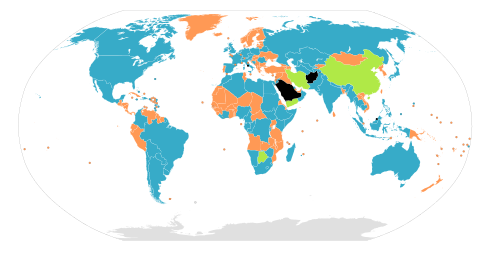List of unicameral legislatures

Approximately half of the world's sovereign states are currently unicameral. The People's Republic of China is somewhat in-between, with a legislature and a formal advisory body. China has a Chinese People's Political Consultative Conference which meets alongside the National People's Congress, in many respects an advisory "upper house".
Many subnational entities have unicameral legislatures. These include the state of Nebraska and territories of Guam and the Virgin Islands in the United States, the Chinese special administrative regions of Hong Kong and Macao, the Australian state of Queensland as well as the Northern Territory and the Australian Capital Territory, a majority of the provinces of Argentina, all of the provinces and territories in Canada, all of the regions of Italy, all of the provinces of Nepal, all of the Spanish autonomous communities, both of the autonomous regions of Portugal, most of the states and union territories of India, and all of the states of Brazil and Germany. In the United Kingdom, the devolved Scottish Parliament, the Welsh Senedd, the Northern Ireland Assembly, and the London Assembly are also unicameral.
National (UN member states and observers)
Federal
| Country | Unicameral body | Seats | Notes |
|---|---|---|---|
| Bundestag | 630 | The Bundestag is technically the unicameral parliament of Germany, since the Basic Law (German constitution) defines the Bundesrat not as a chamber of the legislature, but as a completely separate legislative institution. | |
| Council of Representatives | 329 | A provision exists for the founding of a "Council of Union", but no move to this effect has been initiated by the existing Council | |
| Congress | 14 | ||
| National Assembly | 15 | ||
| Federal National Council | 40 | ||
| National Assembly | 277 |
Unitary
Territorial
State parliaments with limited recognition
| Country | Unicameral body | Seats | Notes |
|---|---|---|---|
| People's Assembly | 35 | ||
| Assembly | 120 | ||
| Assembly of the Republic | 50 | ||
| Legislative Council | 132 | ||
| National Council | 51 | ||
| Parliament | 34 | ||
| Legislative Yuan | 113 | The original constitution is partially superseded by the additional articles only on Taiwan which replaced the tricameral parliament into a unicameral one. A sunset clause in the additional articles will terminate them in the event of a hypothetical resumption of ROC rule in mainland China. | |
| Supreme Council | 33 |
Subnational
Federations

- All legislatures and legislative councils of the regions and communities of Belgium
- All legislative assemblies in all states of Brazil
- All legislative assemblies of the provinces and territories of Canada
- All Landtage of the states of Germany
- All legislative assemblies of the states of Malaysia
- All legislatures in all states of Mexico
- All legislatures of the provinces in Nepal
- All legislatures of the provinces and territories in Pakistan
- The legislature of the state of Nebraska, and council of the District of Columbia in the United States
- Parliament of Queensland and the legislative assemblies of the territories of Australia (but not the other states)
- Provincial legislatures of the provinces of South Africa
- Narodna skupština of Republika Srpska
- 15 of the 23 provinces of Argentina — Chaco, Chubut, Córdoba, Formosa, Jujuy, La Pampa, La Rioja, Misiones, Neuquén, Río Negro, San Juan, Santa Cruz, Santiago del Estero, Tierra del Fuego, Tucumán, and the autonomous city of Buenos Aires.
- 22 of the 28 states and union territories of India — Arunachal Pradesh, Assam, Chhattisgarh, Goa, Gujarat, Haryana, Himachal Pradesh, Jharkhand, Kerala, Madhya Pradesh, Manipur, Meghalaya, Mizoram, Nagaland, Odisha, Punjab, Rajasthan, Sikkim, Tamil Nadu, Tripura, Uttarakhand, and West Bengal; and 3 of the union territories — Delhi, Jammu and Kashmir, and Puducherry.
Devolved governments
- Regional councils of France
- Iraqi Kurdistan Parliament
- Regional councils of Italy
- Regional House of Representative councils of Indonesian provinces, regencies, and cities
- Bangsamoro Parliament in Philippines
- Parliaments (variously named Parlamento, Cortes, Junta) of the Autonomous communities of Spain
- City and County Councils of the administrative divisions of Taiwan
- Councils of the oblasts of Ukraine
- Countries of the United Kingdom:
Others
- Local People's Congresses of all levels of provinces, regions, and municipalities of the People's Republic of China
- National Council of the Palestine Liberation Organization